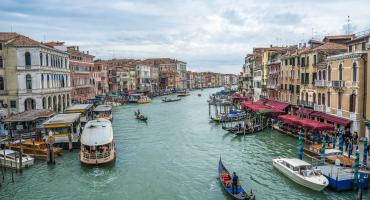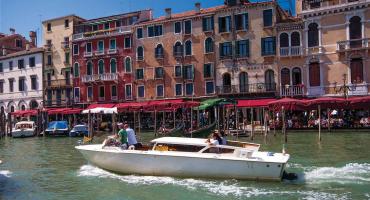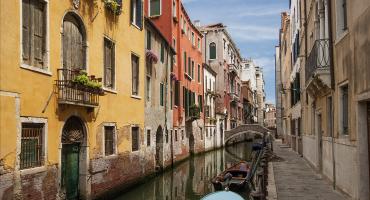The Constitution Bridge was opened to public on the night of September 11, 2008. After the Rialto Bridge of the XVI century, the Scalzi Bridge and the Accademia Bridge of the 1930s, the Constitution Bridge is the fourth bridge over the Grand Canal, linking the railway station to Piazzale Roma.
The former mayor of Venice Massimo Cacciari proposed the name of Ponte de la Zirada (bridge of the curve), since the initial curve of the Grand Canal in which the bridge is positioned, was in ancient times called this way. Other possible names were: Bridge of the two Saints, since the bridge links the two streets of Saint Chiara and Saint Lucia and Sabbadino Bridge, to celebrate the Proto (the old title for the first architect of Venice Arsenal) who in XVII century thought about the building a fourth bridge.
In 1999, Venice Municipality gave the task to prepare the documentation of the project to the engineer Santiago Calatrava. The project underwent many meticulous revisions and tests by different authorities such as the Association for the Protection of the city of Venice, the Ministry of Artistic and Cultural Heritage of Venice and others.
The building of the project started in 2003. The installation and setup of the bridge started on July 28 2007 and ended on August 11 2007. The setup of the central part was done during the night between August 7 and 8 to avoid the inconveniences caused by the closure of the Grand Canal. The transportation was arranged by water from Marghera with two different transportations: one for the lateral parts and the other for the central one. After the test in autumn 2007, the glass steps and the parapets were set.
All the structural parts are made of steel, while steps and scaffolding are made of alternating sections of glass and Istrian stone. The abutments are of reinforced concrete covered by Istrian stone. The parapet is completely made of glass with a polished bronze banister.
Simultaneously they have been starting works for the building of the gondola cableway to transport people with walking difficulties.
At night, the way is lighted up by the fluorescent lamps and by the lightning coming from the lower part of the transparent scaffolding.



